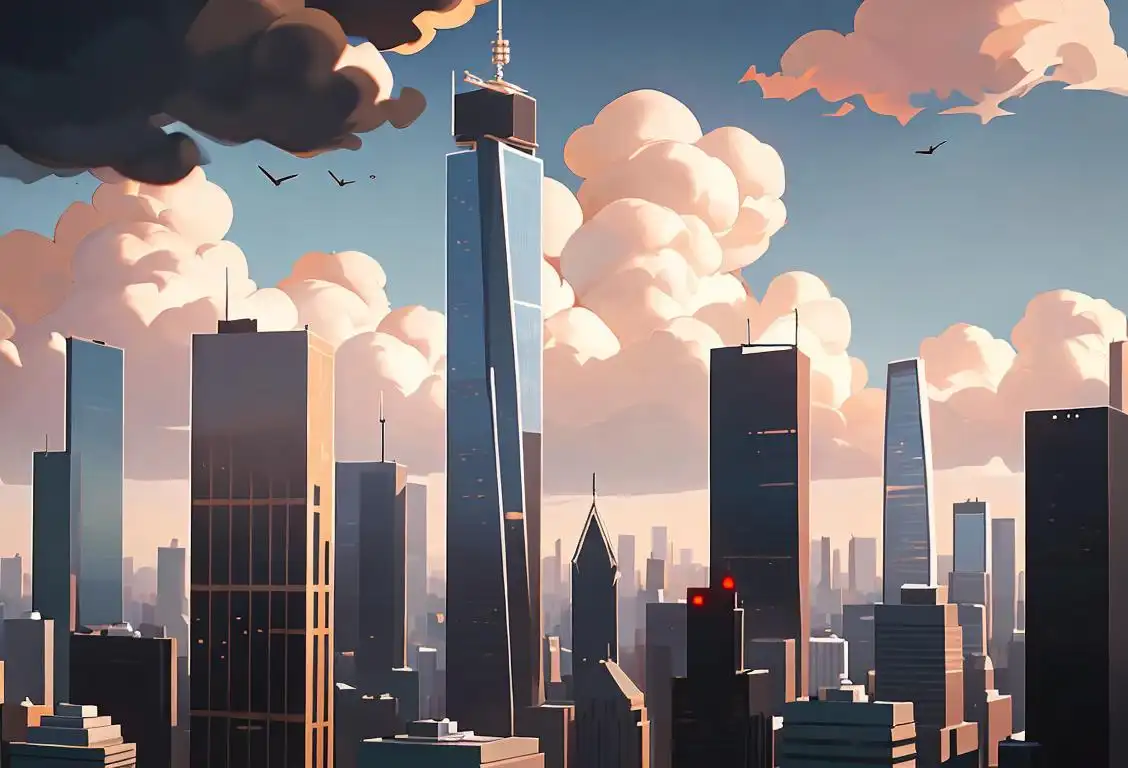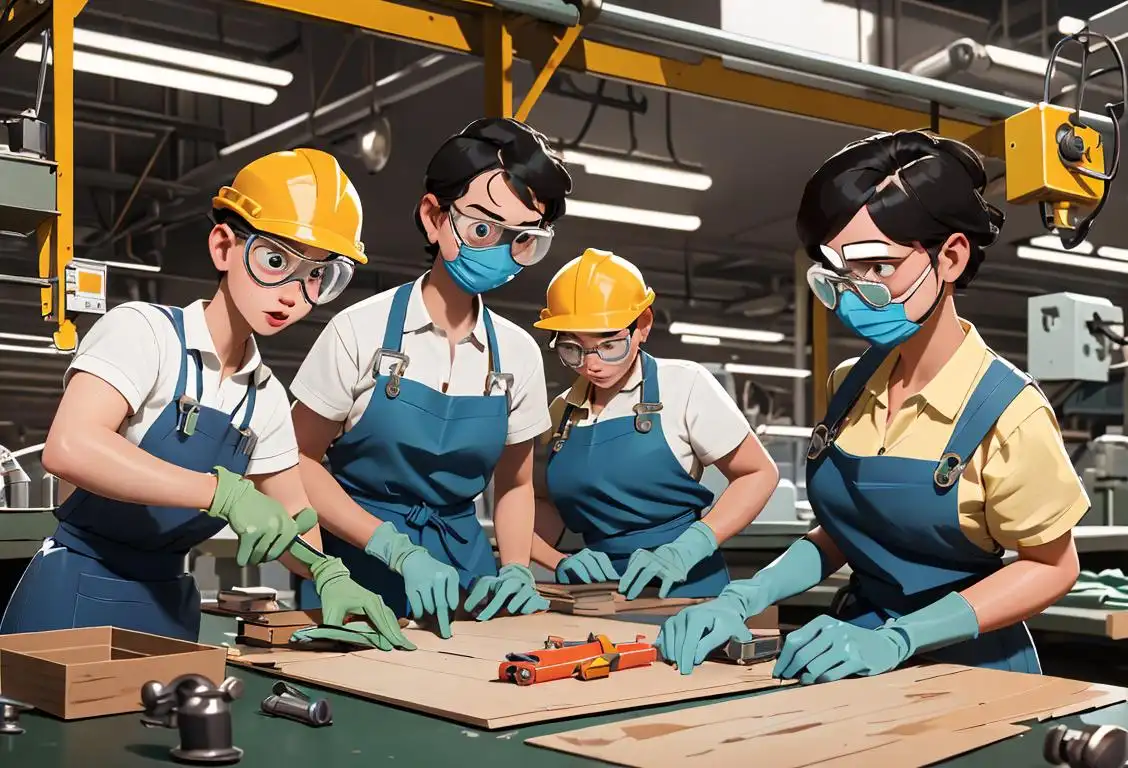National Skyscraper Day

Happy National Skyscraper Day! Today is all about those towering structures that reach for the sky and make us feel like tiny specks in comparison. So, brace yourself for some sky-high fun and fascinating facts!
When is Skyscraper Day?
It's national skyscraper day on the 3rd September.
The Birth of National Skyscraper Day
On this day, we celebrate the remarkable feats of architectural engineering that have graced our skylines throughout history. National Skyscraper Day gives us the perfect excuse to look up in awe and appreciate the majestic buildings that have become symbols of progress and ambition.
The origins of National Skyscraper Day are rooted in the advancement of technology and the human desire to touch the clouds. As our ability to construct taller and sturdier buildings grew, so did our fascination with these giants of the urban landscape.
Skyscrapers have transformed our cities, shaping the way we live, work, and play. They have become icons that define entire skylines, from the Empire State Building in New York City to the Burj Khalifa in Dubai.
The Rise of the Skyscrapers
Skyscrapers didn't just appear overnight. They evolved over time, pushed forward by architectural visionaries and new technological breakthroughs. The first true skyscraper is often credited to the Home Insurance Building, which was completed in Chicago in 1885.
This groundbreaking structure rose to an impressive ten stories, thanks to the advent of the steel frame. This new construction technique enabled buildings to reach soaring heights, as opposed to the traditional load-bearing walls that limited vertical expansion.
From there, the skyscraper craze took off, with architects and engineers vying to outdo each other in the race to reach even greater heights. The development of elevators, reinforced concrete, and other innovations further fueled the skyward aspirations of builders around the world.
Skyscrapers in the Internet Age
Today, skyscrapers continue to captivate our imaginations, but they have also become symbols of our modern connected world. With the rise of the internet, these towering structures house not only offices and residences but also data centers and communication infrastructure.
Skyscrapers have become a reflection of our society's aspirations, a testament to our ability to conquer gravity. They stand tall as symbols of progress, human ingenuity, and the endless possibilities of the future.
Did You Know?
In honor of National Skyscraper Day, here's a fun fact for you: The world's tallest building, the Burj Khalifa in Dubai, reaches a staggering height of 828 meters (2,717 feet). That's more than twice the height of the Eiffel Tower!
History behind the term 'Skyscraper'
1884
The Chicago Home Insurance Building
The term 'skyscraper' originated in 1884 with the construction of the Chicago Home Insurance Building. Designed by William Le Baron Jenney, this ten-story building was the first to utilize a steel framework as its primary structural support, allowing for the construction of taller and more stable buildings. The Home Insurance Building stood at 138 feet tall and is considered the world's first skyscraper.
1890
The Tacoma Building
In 1890, the Tacoma Building, located in Chicago, was completed and stood at a towering 180 feet. Designed by Holabird & Roche, this building's construction marked a significant step forward in the development of skyscrapers. The Tacoma Building featured an innovative steel-framed structure with a robust internal cage system, offering enhanced stability and allowing for greater heights.
1913
The Woolworth Building
Completed in 1913, the Woolworth Building in New York City became an iconic symbol of the skyscraper era. Designed by architect Cass Gilbert, it stood as the tallest building in the world at the time, reaching a height of 792 feet. The Woolworth Building prominently showcased the Gothic architectural style, emphasizing verticality with its ornate detailing and pointed arches. Its grandeur solidified the skyscraper's role as a towering symbol of urban progress and prosperity.
1931
The Empire State Building
The Empire State Building, completed in 1931, marked a remarkable achievement in skyscraper construction. Designed by architect William F. Lamb, this Art Deco masterpiece soared to a height of 1,454 feet and stood as the tallest building in the world for nearly four decades. Its distinctive setback design, streamlined shape, and use of modern construction methods showcased the advancements made in skyscraper engineering, setting new standards for vertical architecture.
1998
The Petronas Towers
In 1998, the completion of the Petronas Towers in Kuala Lumpur, Malaysia, made a significant impact on the global skyscraper landscape. Designed by Argentine architect Cesar Pelli, these twin towers reached a height of 1,483 feet, surpassing the Empire State Building as the tallest in the world. The Petronas Towers' sleek, postmodern design and innovative construction techniques showcased the ongoing evolution of skyscraper aesthetics and engineering capabilities.
2021
The Burj Khalifa
As of 2021, the Burj Khalifa in Dubai, United Arab Emirates, holds the title of the world's tallest skyscraper. Designed by Adrian Smith, this colossal structure reaches a record-breaking height of 2,717 feet. The Burj Khalifa's sleek, contemporary design and cutting-edge engineering techniques symbolize humanity's persistent pursuit of architectural innovation. Its towering presence serves as a testament to the continued fascination and impact of skyscrapers in shaping modern cityscapes.
Did you know?
The world's tallest building, the Burj Khalifa in Dubai, reaches a height of 828 meters (2,717 feet), that's more than twice the height of the Eiffel Tower!Tagged
fun technology architectureFirst identified
3rd September 2015Most mentioned on
3rd September 2015Total mentions
1070Other days
Skyscraper Day
Stockpile Website A Day
Manufacturing Day
It Professionals Day
Techies Day
Battery Day
Video Games Day
Radio Day
Stem Day
Odometer Day








